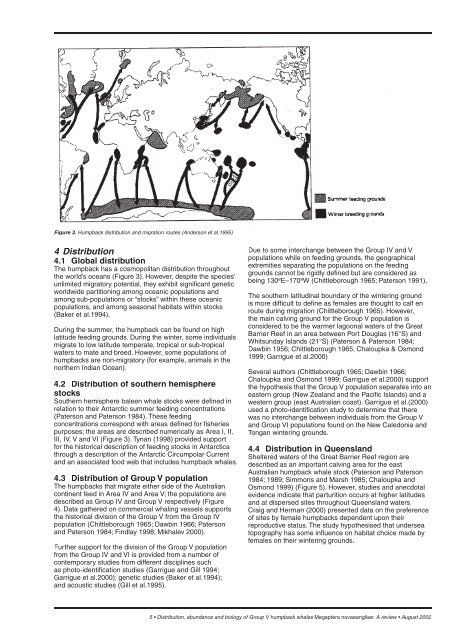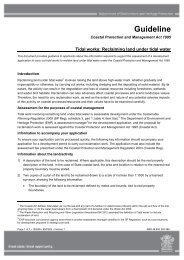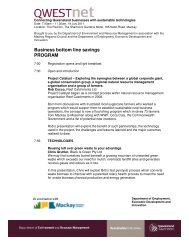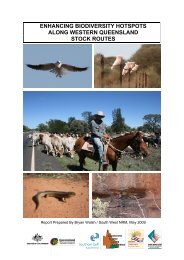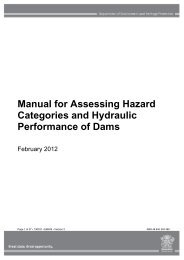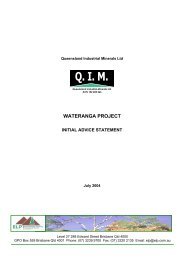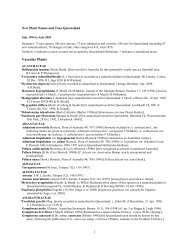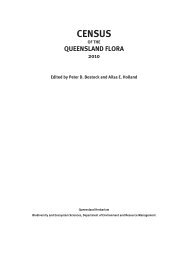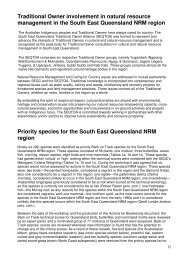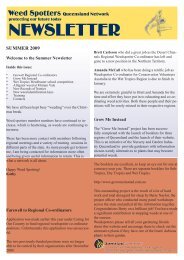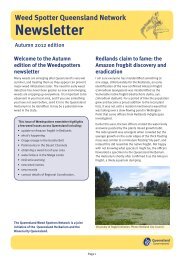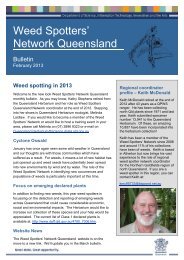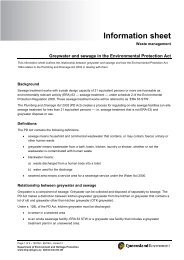Distribution, abundance and biology of Group V humpback whales ...
Distribution, abundance and biology of Group V humpback whales ...
Distribution, abundance and biology of Group V humpback whales ...
You also want an ePaper? Increase the reach of your titles
YUMPU automatically turns print PDFs into web optimized ePapers that Google loves.
Figure 3. Humpback distribution <strong>and</strong> migration routes (Anderson et al.1995)<br />
4 <strong>Distribution</strong><br />
4.1 Global distribution<br />
The <strong>humpback</strong> has a cosmopolitan distribution throughout<br />
the world’s oceans (Figure 3). However, despite the species’<br />
unlimited migratory potential, they exhibit signifi cant genetic<br />
worldwide partitioning among oceanic populations <strong>and</strong><br />
among sub-populations or “stocks” within these oceanic<br />
populations, <strong>and</strong> among seasonal habitats within stocks<br />
(Baker et al.1994).<br />
During the summer, the <strong>humpback</strong> can be found on high<br />
latitude feeding grounds. During the winter, some individuals<br />
migrate to low latitude temperate, tropical or sub-tropical<br />
waters to mate <strong>and</strong> breed. However, some populations <strong>of</strong><br />
<strong>humpback</strong>s are non-migratory (for example, animals in the<br />
northern Indian Ocean).<br />
4.2 <strong>Distribution</strong> <strong>of</strong> southern hemisphere<br />
stocks<br />
Southern hemisphere baleen whale stocks were defi ned in<br />
relation to their Antarctic summer feeding concentrations<br />
(Paterson <strong>and</strong> Paterson 1984). These feeding<br />
concentrations correspond with areas defi ned for fi sheries<br />
purposes; the areas are described numerically as Area I, II,<br />
III, IV, V <strong>and</strong> VI (Figure 3). Tynan (1998) provided support<br />
for the historical description <strong>of</strong> feeding stocks in Antarctica<br />
through a description <strong>of</strong> the Antarctic Circumpolar Current<br />
<strong>and</strong> an associated food web that includes <strong>humpback</strong> <strong>whales</strong>.<br />
4.3 <strong>Distribution</strong> <strong>of</strong> <strong>Group</strong> V population<br />
The <strong>humpback</strong>s that migrate either side <strong>of</strong> the Australian<br />
continent feed in Area IV <strong>and</strong> Area V; the populations are<br />
described as <strong>Group</strong> IV <strong>and</strong> <strong>Group</strong> V respectively (Figure<br />
4). Data gathered on commercial whaling vessels supports<br />
the historical division <strong>of</strong> the <strong>Group</strong> V from the <strong>Group</strong> IV<br />
population (Chittleborough 1965; Dawbin 1966; Paterson<br />
<strong>and</strong> Paterson 1984; Findlay 1998; Mikhalev 2000).<br />
Further support for the division <strong>of</strong> the <strong>Group</strong> V population<br />
from the <strong>Group</strong> IV <strong>and</strong> VI is provided from a number <strong>of</strong><br />
contemporary studies from different disciplines such<br />
as photo-identifi cation studies (Garrigue <strong>and</strong> Gill 1994;<br />
Garrigue et al.2000); genetic studies (Baker et al.1994);<br />
<strong>and</strong> acoustic studies (Gill et al.1995).<br />
Due to some interchange between the <strong>Group</strong> IV <strong>and</strong> V<br />
populations while on feeding grounds, the geographical<br />
extremities separating the populations on the feeding<br />
grounds cannot be rigidly defi ned but are considered as<br />
being 130ºE–170ºW (Chittleborough 1965; Paterson 1991).<br />
The southern latitudinal boundary <strong>of</strong> the wintering ground<br />
is more diffi cult to defi ne as females are thought to calf en<br />
route during migration (Chittleborough 1965). However,<br />
the main calving ground for the <strong>Group</strong> V population is<br />
considered to be the warmer lagoonal waters <strong>of</strong> the Great<br />
Barrier Reef in an area between Port Douglas (16°S) <strong>and</strong><br />
Whitsunday Isl<strong>and</strong>s (21°S) (Paterson & Paterson 1984;<br />
Dawbin 1956; Chittleborough 1965; Chaloupka & Osmond<br />
1999; Garrigue et al.2000)<br />
Several authors (Chittleborough 1965; Dawbin 1966;<br />
Chaloupka <strong>and</strong> Osmond 1999; Garrigue et al.2000) support<br />
the hypothesis that the <strong>Group</strong> V population separates into an<br />
eastern group (New Zeal<strong>and</strong> <strong>and</strong> the Pacifi c Isl<strong>and</strong>s) <strong>and</strong> a<br />
western group (east Australian coast). Garrigue et al.(2000)<br />
used a photo-identifi cation study to determine that there<br />
was no interchange between individuals from the <strong>Group</strong> V<br />
<strong>and</strong> <strong>Group</strong> VI populations found on the New Caledonia <strong>and</strong><br />
Tongan wintering grounds.<br />
4.4 <strong>Distribution</strong> in Queensl<strong>and</strong><br />
Sheltered waters <strong>of</strong> the Great Barrier Reef region are<br />
described as an important calving area for the east<br />
Australian <strong>humpback</strong> whale stock (Paterson <strong>and</strong> Paterson<br />
1984; 1989; Simmons <strong>and</strong> Marsh 1985; Chaloupka <strong>and</strong><br />
Osmond 1999) (Figure 5). However, studies <strong>and</strong> anecdotal<br />
evidence indicate that parturition occurs at higher latitudes<br />
<strong>and</strong> at dispersed sites throughout Queensl<strong>and</strong> waters.<br />
Craig <strong>and</strong> Herman (2000) presented data on the preference<br />
<strong>of</strong> sites by female <strong>humpback</strong>s dependent upon their<br />
reproductive status. The study hypothesised that undersea<br />
topography has some infl uence on habitat choice made by<br />
females on their wintering grounds.<br />
5 • <strong>Distribution</strong>, <strong>abundance</strong> <strong>and</strong> <strong>biology</strong> <strong>of</strong> <strong>Group</strong> V <strong>humpback</strong> <strong>whales</strong> Megaptera novaeangliae: A review • August 2002


